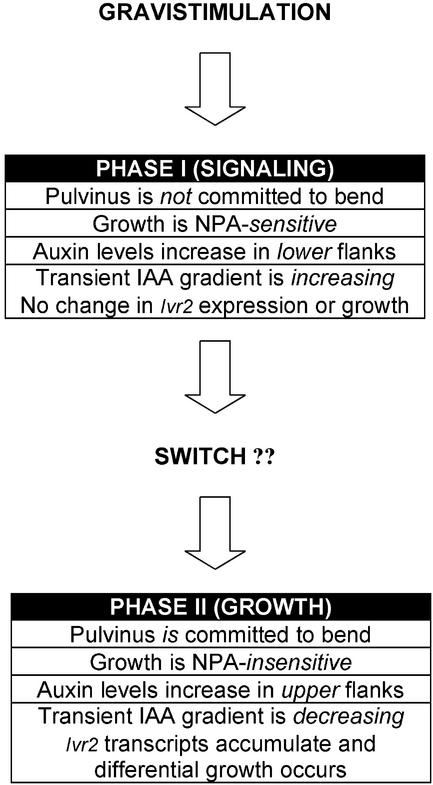Figure 8.
Two-phase model of gravistimulated auxin redistribution and growth responses during the first 24 h in maize pulvini. Upon gravistimulation of maize plants, the stem internodal pulvinus tissue enters Phase I. Growth does not occur during this phase; instead, Phase I can generally be thought of as a signaling phase. During Phase I, increases in free IAA in the lower one-half of the pulvinus result in IAA asymmetry increasing. In addition, Phase I can be inhibited by NPA. Gravistimulation of maize plants leads to a number of other changes within the pulvinus that not shown here, which would be expected to occur during Phase I. These include MAP kinase signaling, pH changes, gene expression changes, and inositol signaling (see text). A continuous gravity signal is required during phase I and, if disrupted, progression will halt. Successful progression through Phase I with a continuous gravity signal leads to an as-yet-unidentified “signal,” perhaps build-up of a sufficient IAA gradient across the pulvinus, indicated here as a “switch.” Once Phase II is entered, the pulvinus is now committed to bend, and a continuous signal is no longer necessary for cell elongation. Phase II is longer than Phase I, and can be thought of as the growth phase. Events that occur include changes in IAA redistribution and the disappearance of a gradient across the pulvinus. Invertase gene, Ivr2, is up-regulated and acid invertase activity is increased.

